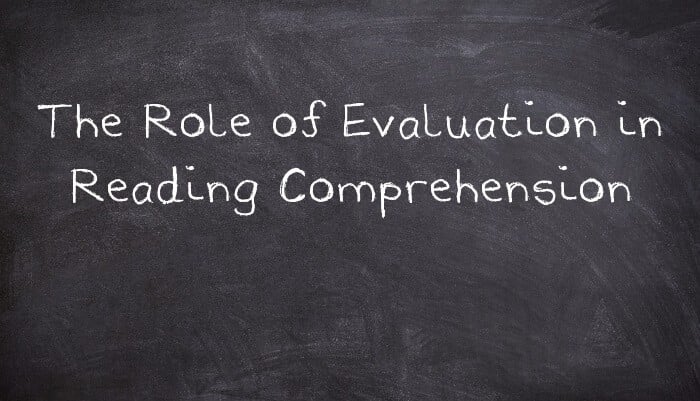How Evaluation can improve comprehension
Here are some examples of how evaluation can improve comprehension:
- Identifying biases: Evaluation can help readers identify biases in the information they are consuming, which can aid in comprehension by helping readers to understand the potential limitations and perspectives of the information.
- Recognising inconsistencies: Evaluation can help readers recognise inconsistencies in the information they are consuming, which can aid in comprehension by highlighting potential errors or contradictions in the material.
- Identifying assumptions: Evaluation can help readers identify assumptions that are being made in the information they are consuming, which can aid in comprehension by highlighting potential gaps in the reasoning or logic of the material.
- Assessing the reliability of sources: Evaluation can help readers assess the reliability of sources, which can aid in comprehension by providing a more complete understanding of the material and its potential limitations.
- Evaluating the credibility of the author: Evaluation can help readers evaluate the credibility of the author, which can aid in comprehension by providing a more complete understanding of the author's expertise and potential biases.
- Analysing the purpose of the text: Evaluation can help readers analyse the purpose of the text, which can aid in comprehension by providing a more complete understanding of the material and its intended audience.
- Identifying the audience: Evaluation can help readers identify the audience for the text, which can aid in comprehension by providing a more complete understanding of the material and its intended purpose.
- Evaluating the tone: Evaluation can help readers evaluate the tone of the text, which can aid in comprehension by providing a more complete understanding of the material and its intended audience.
- Identifying the main idea: Evaluation can help readers identify the main idea of the text, which can aid in comprehension by providing a more complete understanding of the material and its purpose.
- Evaluating the supporting evidence: Evaluation can help readers evaluate the supporting evidence provided in the text, which can aid in comprehension by providing a more complete understanding of the material and its arguments.
Overall, evaluation is a critical component of comprehension because it allows readers to assess the quality and reliability of the information they are consuming, identify potential biases and inconsistencies, and make informed decisions about the material's relevance and usefulness. By incorporating evaluation into their reading process, readers can improve their comprehension and retention of the material, and make more informed decisions about the information they consume.
